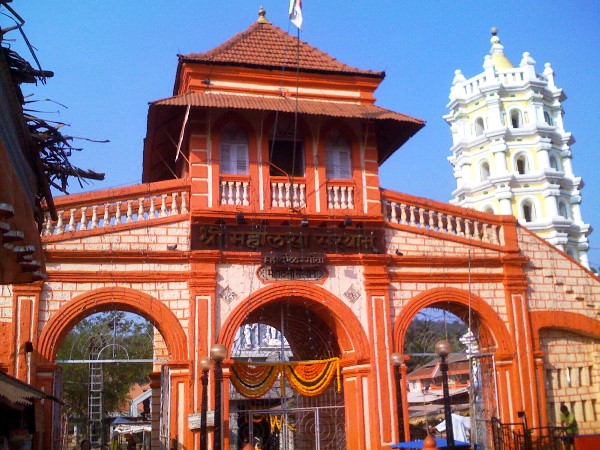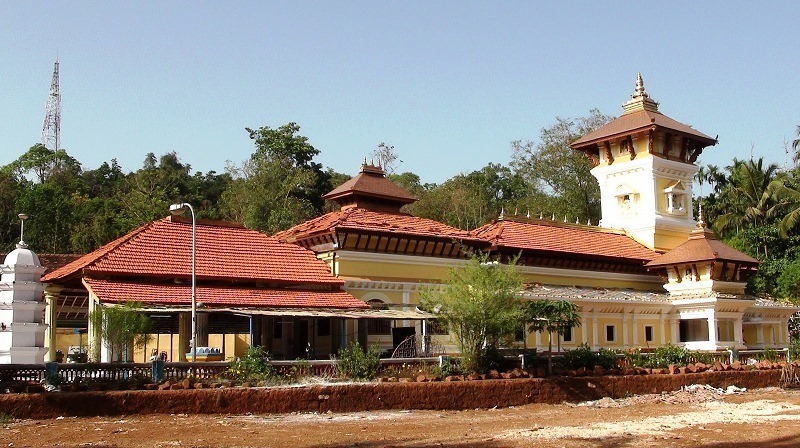
Mahadev Temple, Tambdi Surla
About Mahadev Temple,
The Mahadev temple of Tambdi Surla is the oldest temple of Goa, that survived from the Portuguese as it was set next to a stream in the middle of the small clearing, hidden in the dense jungle. The Tambdi Surla temple dedicated to Lord Shiva has a pillared porch and three stepped entrances. The temple is built in the Hemadpanthi style from the finest weather-resistant grey-black basalt.
It is considered to be the only specimen of Kadamba-Yadava architecture in basalt stone preserved and available in Goa. The temple has been declared as a protected historical monument by the Archaeological Survey of Idia
A unique specimen of the typical Kadamba-Yadava architecture. It has fascinating figures of Lord Vishnu and Brahma along with their consorts. Legend has it that the Lingam here is protected by a giant cobra. The temple is built in a way such that the first rays of the sun fall on the presiding deity. This temple has survived the onslaughts of time and its time-worn and decadent appearance somehow adds to its charm. The headless figure of Nandi has 4 matching columns surrounding it, one of which has the royal symbol of the Kadamba kingdom. If you happen to come here on Maha-Shiv-Raatri, then nothing like it.
The temple itself is built in Jain style in the twelfth century. There are some interesting details about the construction itself which has led to debates about the actual origins of the temple. The temple is built in a place which is quite inaccessible and away from the main settlements of the time. The size of the temple is quite small as compared to the size of the average Goan temple. And finally, the top part of the temple has never been completed.
The small, beautifully carved and perfectly proportioned black basalt temple is dedicated to Lord Shiva and is reminiscent of the temples at Aihole in neighboring Karnataka. The temple has survived Muslim invasions and Portuguese persecution, in its almost perfect condition mainly due to its remote location in a clearing deep in the forest at the foot of the Western Ghats which surround the site in a sheer wall of impenetrable vegetation.
The Kadamba dynasty ruled Goa between the tenth and fourteenth centuries and built the temple from the finest weather-resistant grey-black basalt, carried across the mountains from the Deccan plateau and lavishly carved in situ by accomplished craftsmen.
The intricate carvings created by these craftsmen adorn the interior and the sides of the building. The temple faces east so that the rays of the rising sun fall on the deity at the crack of dawn. There is a small mandap (pillared hall) and the inner sanctum is surmounted by a three-tired tower which is incomplete or which has been dismantled sometime in the distant past.
Bas-relief figures of Lord Shiva, Lord Vishnu, and Lord Brahma, with their respective consorts, appear on panels at the sides of the temple. Surprisingly the mandap is covered with a roof of plain grey sloping slabs.
The river Surla flows nearby and can be reached via a flight of stone steps. There is a headless Nandi (bull, Shiva's vehicle) in the center of the mandap, surrounded by four matching columns. The symbol of the Kadamba kingdom, an elephant trampling a horse is carved on the base of one of the columns.
There is a linga (symbol of Lord Shiva) mounted on a pedestal inside the inner sanctum and local legend has it that a huge King Cobra is in permanent residence in the dimly lit interior.
The festival of Mahashivratri is celebrated with all pomp and gaiety at the temple by the local people residing in surrounding villages
Air
Being located at Dabolim, Goa International Airport is also known as Dabolim Airport. It is located at a distance of 29 km from the capital of Goa to Panaji. This airport operates various domestic and international flights to connect the city with other major cities of the nation and every corner of the world.
Rail
Goa has developed rail routes that easily connect the city with other cities. There are two prominent railway stations in Goa, which are Madgaon Railway Station and Vasco-da-Gama Railway Station. Konkan Railway which is located at Margao operates trains between Mumbai and Panaji. It also operates trains to other destinations as well. The Nizamuddin Goa Express is the only train that has access from South Central Railway. It departs from Delhi and reaches Goa via Pune.
Road
The city is very well connected with other cities through roadways. The roads of the city have access to many public and private buses. Many Government undertakings such as KSRTC, MSRTC and KTC are operated from Madgaon, Panaji and Vasco Da Gama. There are daily bus services to Goa from Mumbai and Pune. Kadamba and Panaji are the two major bus terminuses of Goa. The state bus services of Goa, Karnataka, and Maharashtra have access to operate from these terminuses. One can also enjoy traveling through super deluxe A/C buses from Mumbai and Bangalore.
Sea
Goa offers shipping services from Mumbai to Panaji making journey exciting and comfortable for its tourists.
....
1. Dona Paula - Goa
2. Calangute Streets - Goa
3. Fort Aguada - Goa
4. Old Goa Churches - Goa
5. Palolem Beach - Goa
6. Panjim City - Goa
7. Shri Mangeshi Temple - Goa
.
.









.jpg)

